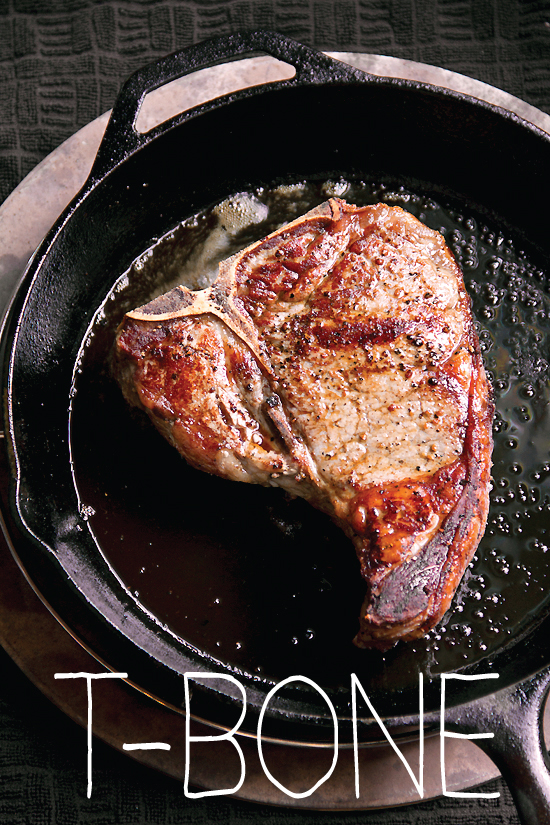
How to Cook Steak on the Stove
How to Cook Steak on the Stove? I’m going to try and explain how I do it in 400 words.
The Source Matters
If you yourself aren’t very knowledgeable about meat, go to a butcher. I’m not saying you can’t get a great piece of beef at most markets. But you really have to know what you’re doing. The best way to learn what you’re doing is to ask a professional some serious questions. Such as: Where is the animal from and what’s the breed?
This matters not only to assure the quality of the meat, but to be sure it was raised using ethical standards. As I’ve said before on this blog. I don’t apologize for being a carnivore. But I do realize that in today’s world meat eaters have certain responsibilities. We just do. Because the raising of beef has one of the highest environmental impacts on this planet. The amount of energy and resources that go into beef production are staggering. The carbon and methane it produces are currently unacceptable to me. Rainforests are mown clear to make room for grazing. People are displaced and our planet is permanently altered. Still, I want delicious quality beef to be available to me and I want it to be healthy and sustainable. To help make that possible I have chosen to eat meat and support ranches with responsible production. It means buying beef that might (does) cost a bit more. But if the market demands better practices, I believe the industry will follow.
Be Prepared
Take the steak out of the refrigerator at least 20 minutes before you cook it (depending on size). It must be room temperature before you proceed.
Cook it Right
Which brings us to the question: How to cook steak on the stove?
Good beef rarely needs more than some oil or butter, salt and pepper. Get the pan very hot, but don’t add more oil. You want to char the meat, not fry it. Lay the steak in the hot pan and let it sear. After 2 or 3 minutes turn it over and put it in a hot oven. How hot is debatable and depends on the size of the meat. Most steaks can handle a couple of minutes at 500 degrees or even withstand a short time under the broiler. Bigger, thicker cuts take less heat and more time. Use a thermometer you trust to gauge the interior temperature. Rare not more than 125 / Medium Rare 130–135 / Medium 135–140.
Don’t Rush it to the Table
Leave to rest for at least 5 minutes. Please.
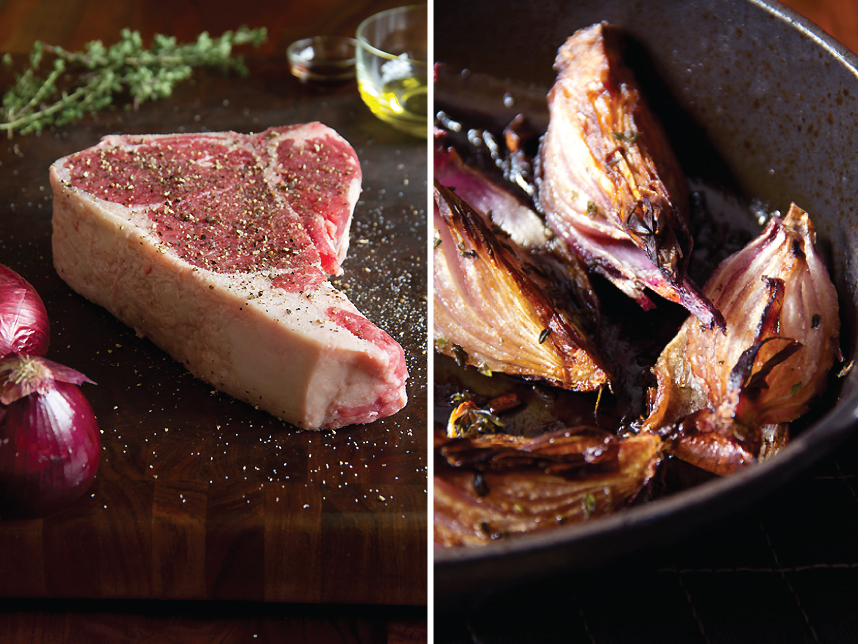
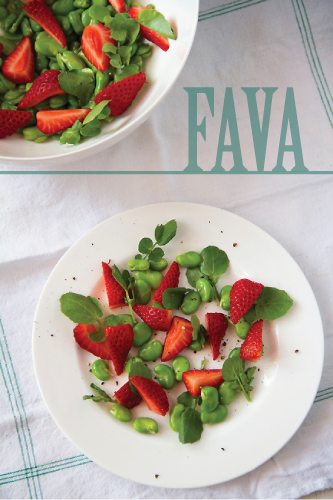
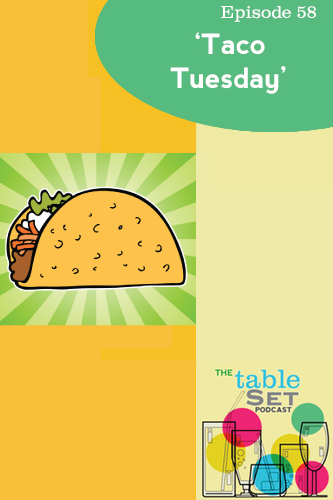
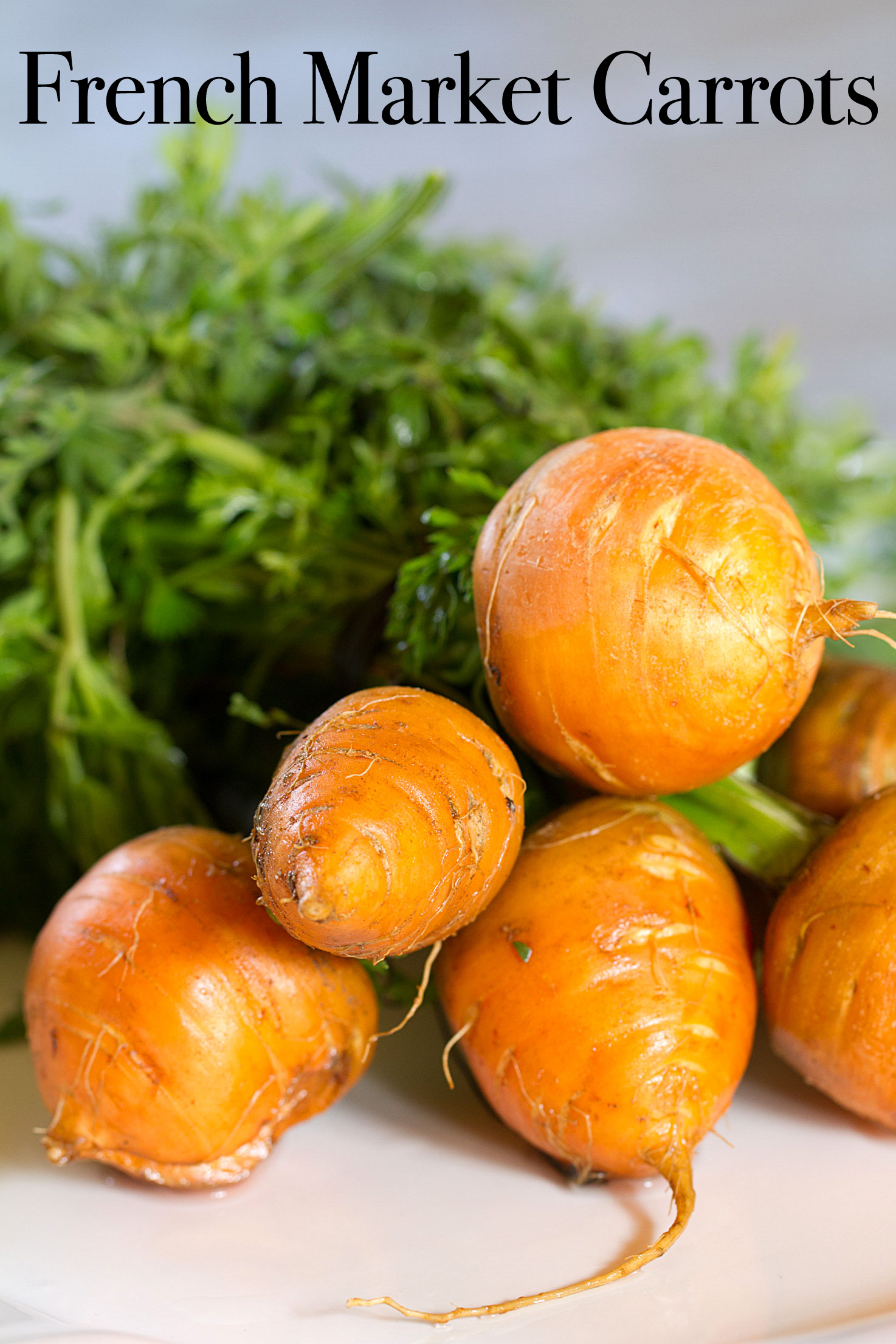
That’s one beautiful piece of meat! This is pretty much how I prepare steak at home. I’ve been trying the whole basting thing that you see all the chefs doing. It’s a little more work, but so far results have been tasty.
I am a steak-on-the-grill kind of girl, but by the looks of your steak I think I am now a stove-steak convert.
Yup, That’s exactly how I cook my steak on the stove. And when I have really thick hamburgers, I do them the same way — sear, then stick them in the oven.
Mark and I did the same thing — cut out inexpensive supermarket beef in favor of organic, locally and sustainably raised beef. Learning to cook grass-fed beef has been a challenge but we are getting there. The rancher always suggests your method, so now (with the advice of an expert) we will do it. Thanks, Greg!
I love Steak on the Stove. Yours looks delicious! When I first met Bart he was famous for his Pepper Steak, and he makes it still.
Additionally, I am with you about responsibly raised beef (and other meats.) Talk about environmental impact — hog farming is really out of control. The more I learned over time, about big commercial meat raising operations, the more difficult I found it to eat meat at all. Life for these animals, whether poultry, pork or beef, is nothing short of torture, I seek out ethical ranches now, and Bart and I are willing to pay the extra cost. I hope others will feel the same. I do not know how much of our country will be able to follow suit, but I am starting in my little corner, and it pleases me to find you there.
Fabulous how-to, Greg! We cook our steaks on the cooktop and then in a super-hot oven, too. But, we always flipped and seared the other side before transferring to oven. Now, I’m thinking your method is superior and cannot wait to try it. Also, I am totally with you on your ethical stance on raising beef. It is so important and I agree that consumer demand will lead to change in best practices. We always pay extra for quality beef. Gorgeous photography! Thank you for sharing, my friend.
I always finish it in the oven, but I want to add in those balsamic onions to my next great steak. (My favorite food is cow).
We eat less meat, but better quality, as I am not willing to give it up:) I usually finish mine on the stove, too (cast iron skillet), but I’ll try your finish-in-the-oven method next time:)
Looks mighty yummy. We usually grill all summer long, but in the winter, our venison is cooked on the stove and comes out perfectly every time. I agree… resting time is a must!
This is very helpful, Greg. We don’t do steak very often in our house, and the main reason is I’m afraid I will overcook it and totally disappoint. Another reason is source, which is most important to me. I will definitely try your recipe.
I stand with you regarding your demanding ethically and sustainably raised beef when shopping. It IS more expensive, but it is much tastier and I can actually sleep at night when I choose to have a steak for dinner, knowing that I’ve made a “better” choice for not only the animal but for the planet as a whole. Beauty of a T‑bone here, and you cook it exactly as I do (this is not a surprise, I’m sure).
I’ve now got such a yen for steak!
You would LOVE visiting the Meyer Natural Foods ranch up in Montana. They do ranching the right way with a huge focus on stewardship of the land, not just for people and cows but all wild life. It is amazing what they do only because “it’s the right thing to do”.
Thanks for the tips! I have never made steak at home before, but I’m always up for trying it. On the stove you say? I think that I could manage this!